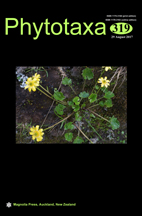Abstract
Recent collections of nectriaceous fungi from Hunan Province and Tibet Autonomous Region were examined. Using combined analyses of morphology and molecular data, Neocosmospora bomiensis and N. hengyangensis are described and illustrated as new species. Neocosmospora bomiensis can be easily recognized by commonly non-stromatic perithecia that are superficial, solitary, subglobose to globose or pyriform and becoming lateral collapsed when dry; clavate asci with eight ascospores that are ellipsoidal, uniseptate, hyaline, and smooth; sickle-shaped, slightly curved macroconidia with (3–)5–6-septate. Neocosmospora hengyangensis is characterized by non-stromatic perithecia that are solitary to gregarious, subglobose to globose, becoming laterally collapsed upon drying; clavate asci with eight ascospores that are ellipsoidal to subfusiform, uniseptate, and have a smooth surface; sickle-shaped, 4–6-septate macroconidia that are slightly curved; and allantoid to rod-shaped, aseptate microconidia. Their morphological distinctions from and phylogenetic relationships with the close relatives are discussed.

